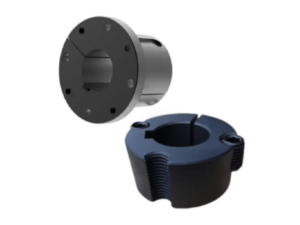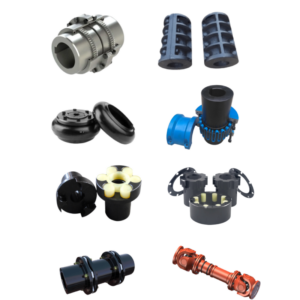The bore diameter (in inches or millimeters) is critical for cross-standard compatibility of taper bushes (e.g., British BS vs. American ANSI standards) because physical installation requirements override differences in naming conventions, taper ratios, or secondary design features. Below is a detailed explanation:
1. Model Numbering Variations Across Standards
- Example:
- A British TB 1210 taper bush may not directly correlate to an American QD 1210, even if their model numbers appear similar.
- The “1210” in TB 1210 might refer to outer dimensions or design codes, not the bore size (e.g., actual bore = 1.25″ or 31.75 mm).
- Key Point: Model numbers are often manufacturer-specific and may include non-dimensional data (e.g., load capacity, design generation).
Conclusion: Relying solely on model numbers risks mismatches; bore size must be verified independently.
2. Physical Fit is Non-Negotiable
The core function of a taper bush is to securely grip the shaft and transmit torque. If the bore diameter does not match the shaft:
- Oversized bore: Causes slippage, vibration, and uneven stress distribution.
- Undersized bore: Prevents installation or damages the shaft/bush during forced assembly.
- Taper engagement: Even if taper ratios (e.g., 1:10 vs. 1:12) differ, the bore must align with the shaft diameter first.
Conclusion: Bore diameter is the primary constraint—no mechanical compatibility exists without it.
3. Unit Consistency Bridges Standards
- Imperial vs. Metric:
- A 1.25″ (British) bore equals 31.75 mm (metric), allowing direct compatibility with an ANSI taper bush labeled for 31.75 mm.
- Standards may differ in nomenclature, but units (inches/mm) are universally measurable.
Example:
A British TB 1612 (1.625″ or 41.28 mm bore) can pair with an American QD 1615 if both share the same bore size, regardless of model numbering.
4. Taper Ratio Differences Are Secondary
- British Standard: Typically 1:10 taper.
- American Standard: Often 1:12 taper (e.g., ANSI QD series).
- Impact:
- Taper ratio affects axial locking distance and clamping force, but bore diameter determines whether installation is even possible.
- A mismatched taper ratio can be compensated with spacers or adjustments, but a mismatched bore diameter renders the assembly impossible.
Priority: Bore first, taper ratio second.
5. Keyways and Accessories Are Adaptable
- Keyway dimensions (width/depth) may vary between standards, but they are secondary to bore size.
- Solutions:
- Custom keyways can be machined.
- Shims or adapters can address minor axial length discrepancies.
Conclusion: Bore diameter is the fixed parameter; other features are adjustable.
6. Practical Workflow for Cross-Standard Matching
- Measure the shaft: Determine exact diameter (in inches or mm).
- Ignore model numbers: Search for taper bushes (across standards) with the same bore size.
- Verify secondary parameters: Confirm taper ratio, keyway specs, and axial length post-bore matching.
Example:
A 50.8 mm (2″) shaft requires a taper bush with a 50.8 mm bore, whether labeled as TB 2012 (British) or QD 2012 (American).
Summary
- Bore diameter is the universal language for cross-standard compatibility.
- Model numbers, taper ratios, and secondary features are secondary to the fundamental requirement: physical fit.
- Always prioritize measured bore size over catalog numbering conventions.






